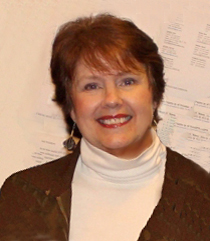 Nancy Huntting, Aesthetic Realism consultant, writes:
Nancy Huntting, Aesthetic Realism consultant, writes:
What’s the deepest thing in us—even when we don’t go by it? What does a poem by Vachel Lindsay say about some of the largest matters in our lives? Read “Art, & the Insistence of Good Sense,” the current issue of The Right of Aesthetic Realism to Be Known.
The commentary by Ellen Reiss begins:
Dear Unknown Friends:
Here is the conclusion of the great lecture Mind and Insistence, which Eli Siegel gave in 1949. In this final section, he speaks about a passage from Vachel Lindsay’s poem “The Congo.”
The poem was published 100 years ago, in 1914. And there are some things in it (not in the lines Mr. Siegel discusses) that are difficult to hear today. I am quite sure they would not seem as offensive if Mr. Siegel’s magnificent explanation of “The Congo” and of what was impelling Lindsay were widely known. Here, he shows that Part 2 of the poem is about various big insistences in all of us, and in reality itself.
The Matter of Poetry
For all the looking askance at aspects of “The Congo” in recent decades, it has been hard for people to put the poem aside altogether. It has gotten into two popular films (Dead Poets Society and The Expendables 2—I am not praising how). On the other hand, even when Lindsay’s poetry was at the height of its fame—say, the 1930s through the ’50s—there was a tendency in academic circles to see him principally as a showman in verse, not a writer of serious, significant, thoughtful poetry. Eli Siegel is the critic who understood and placed Lindsay. He saw Lindsay’s “The Santa-Fé Trail,” “The Congo,” “General William Booth Enters into Heaven,” “Abraham Lincoln Walks at Midnight,” and other poems, as having high literary quality, and in some instances greatness. He saw them as poetry, in exactly the same sense that Milton’s Paradise Lost is poetry, and Baudelaire’s Les Fleurs du mal, and Wordsworth’s “Tintern Abbey,” and Hart Crane’s The Bridge. The criterion for art of any kind, anywhere, is in this central principle of Aesthetic Realism: “All beauty is a making one of opposites, and the making one of opposites is what we are going after in ourselves.”
Then, there is the way Eli Siegel read “The Congo”—which thrilled people at literary gatherings and in audiences in the 1920s and ’30s, and in Aesthetic Realism poetry classes he taught in the decades that followed. For now, I’ll simply say that his reading of “The Congo” had a oneness of utter letting go, of the elemental—and structure, knowledge, order at its most alive.
About the World & Our Lives
We cannot include, for reasons of space, the entire passage that Mr. Siegel read in Mind and Insistence. One can see, though, that it was a means of his discussing some of the largest matters in the world; for example, the relation of knowledge and joy, logic and a good time. >> Read more